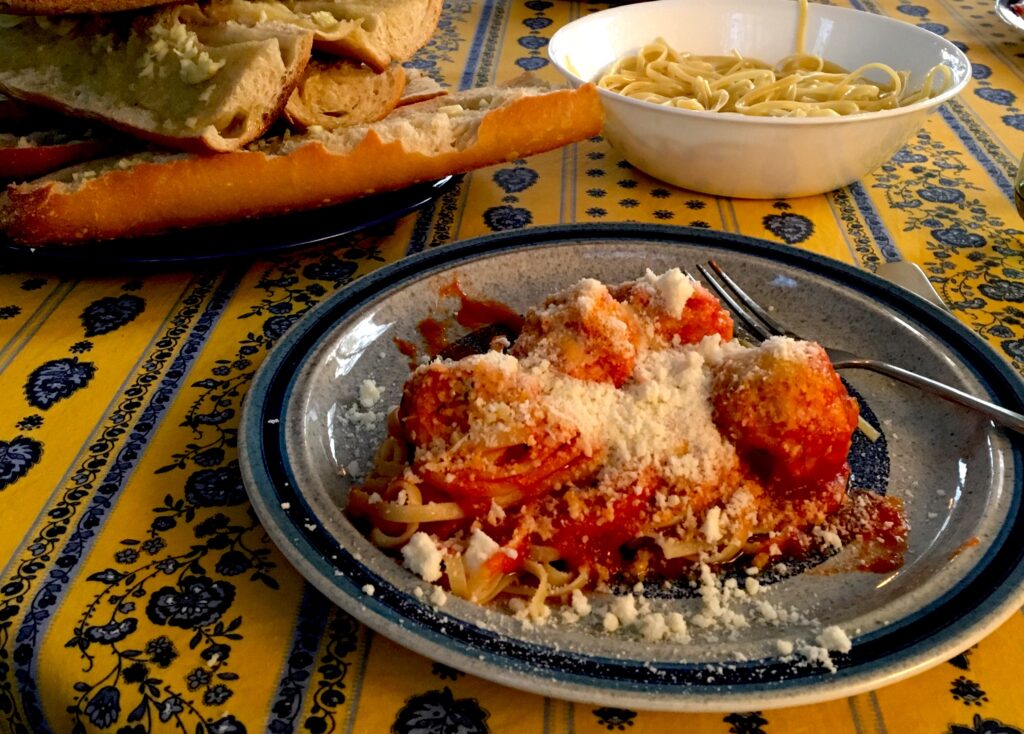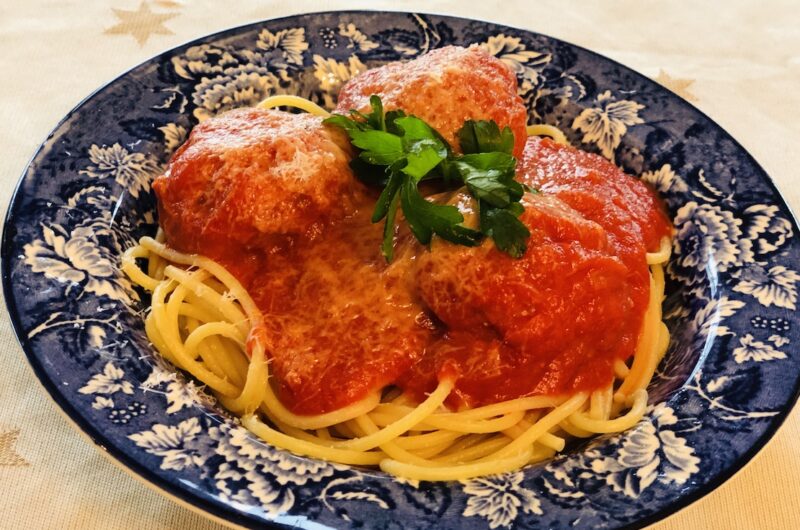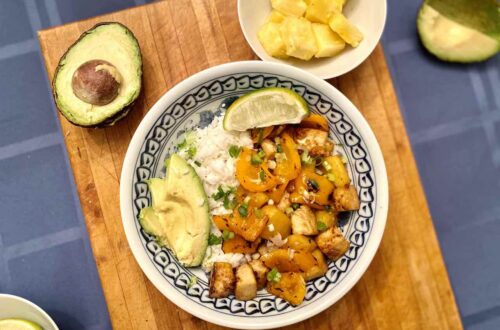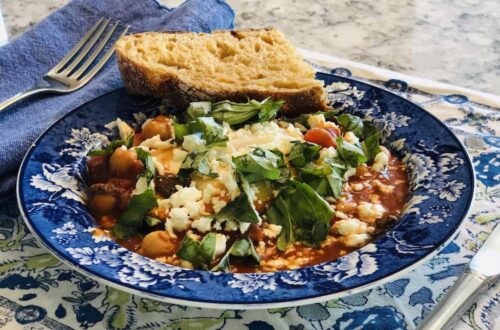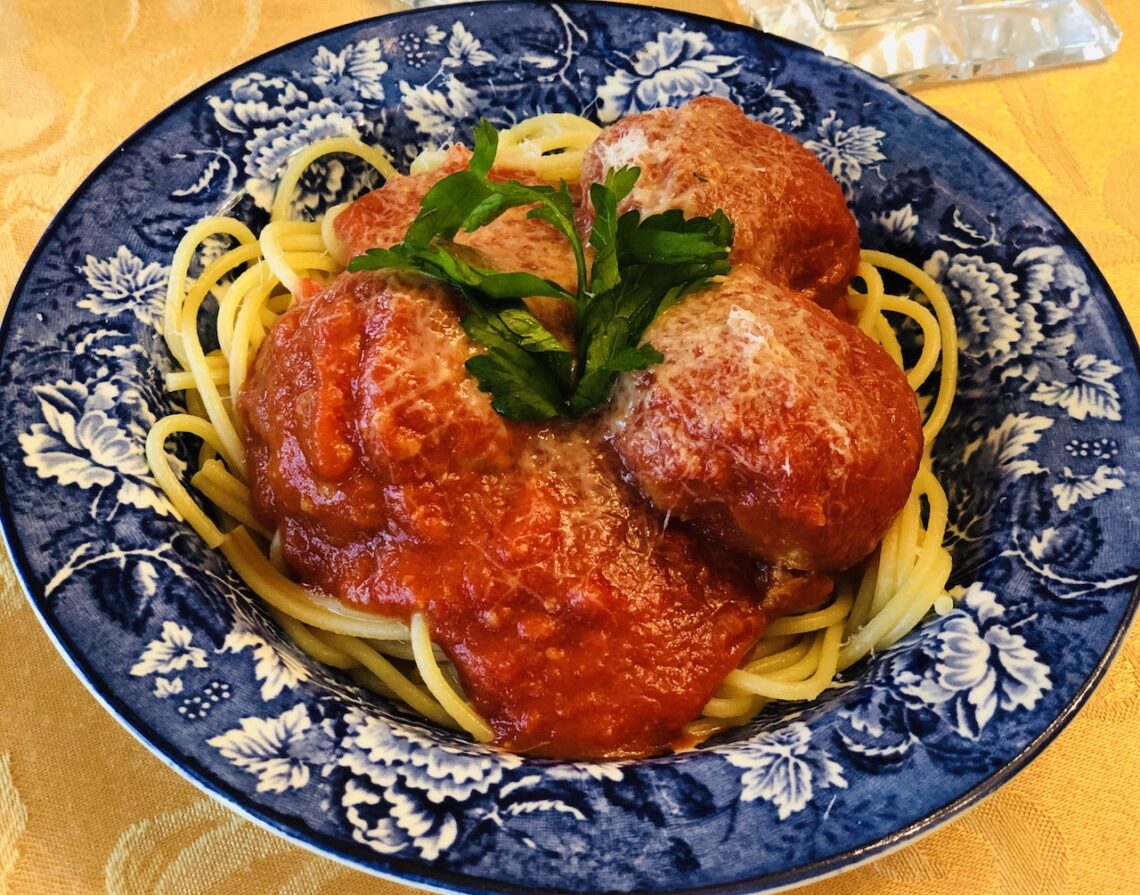
Turkey Meatballs
When I started this blog, I promised myself that I wouldn’t rely on too many of Deb Perelman’s recipes from Smitten Kitchen. But here’s the problem: because her recipes are perfect, for years they’ve been the core of my cooking. Whenever I needed a recipe – for dinner, a picnic, or a party – I’d turn to Smitten Kitchen, and Deb always delivered. These meatballs are no exception. They are a simple, do-ahead, hearty meal that became a staple for me during law school. Delicious over pasta, they are just as good on their own – and even better with garlic bread.
The original recipe calls for ground beef and pork, but I like to use ground turkey. I’m sure the beef/pork mix is delicious, but I’m not a huge fan of ground pork and it’s never tasted quite as good with beef as with turkey. So I stand by my choice of ground turkey – with a caveat. These meatballs are good when you first make them, but to truly enjoy them as they‘re meant to be enjoyed, make them a day ahead of time. The flavors mix overnight in a way that is magical.
Now, let’s dive into turkey production. We all probably have a sense that meat production in the US is awful, but this doesn’t stop us from eating a lot of meat. Americans eat about 245 million turkeys a year, or 5.9 billion pounds. (This is a sliver of the amount of chicken Americans eat, at 42.2 billion pounds.) For this post, I want to focus on the conditions – both for turkeys and owners – on turkey farms.
Like most factory farming, turkey farming is gruesome. Generally, turkeys are kept in dark industrial barns with up to ten thousand of their fellow birds crowded together. Their beaks are trimmed so that they can’t peck each other – something they might do because they’re so distraught in these crowded barns. Turkeys are bred to grow quickly and larger than in nature (and with a lot of white meat), which makes it difficult for them to walk, fly, or reproduce naturally. (This is true of organic turkeys as well – apparently most turkeys sold in grocery stores are GMOs.)
The turkey industry is structured in a way that allows large companies to control production, including how turkeys are raised, while outsourcing the work and the risk to small farmers. In the past couple of decades, turkey farming has become highly centralized. In 2013, four corporations – Cargill, Hormel, Butterball, and Farbest Foods – controlled more than half of the industry. These companies don’t grow the birds; instead, they generally have exclusive short-term contracts with poultry farmers. This means that the company drops off the chicks and the feed with the farmer and picks up the birds about six weeks later, when they are grown. The company may also provide veterinary services and technical assistance to the farmer. Once the company takes the turkeys back, it slaughters, packages, and sells the turkeys.
The problem with this set-up is that the companies have much of the power, but the farmers carry a lot of the risk. Poultry farmers often borrow hundreds of thousands of dollars, if not millions, to build industrial barns. Having invested in this infrastructure, farmers need income, which they get by signing these short-term contracts. But companies can require farmers to make upgrades both during current contracts and before signing the next one. This can force farmers to take out even more loans, just to stay afloat. Companies also often use the “tournament” payment system for poultry farms, in which farmers earn money based on how much feed they use compared with how much weight their birds gain. Companies will pay out the same amount of money overall, but farmers earn different amounts, depending on how efficient their birds were — and the amount can vary quite a lot. It’s hard to say how farmers feel about this system, but farmers have said that companies sometimes retaliate if a farmer complains. While meat prices have been increasing for consumers, poultry farmers don’t seem to be getting much of the pie, and many are often close to bankruptcy. By one estimate (assuming a pound of turkey sells for $1.29 per pound), turkey farmers receive $0.06 per pound of turkey – while companies like Cargill often make $0.53 per pound.
During the Obama era, there was some hope that companies might be reined in. The Obama administration proposed a number of rules – regulations to be passed by federal regulatory agencies – that would have helped poultry farmers. These included rules to regulate the tournament payment system as well as rules to make it easier to sue companies and that more clearly prohibited practices such as retaliation against farmers. But under Trump these rules have not been passed and farmers – many of whom voted for Trump – are frustrated.
There’s a lot more to say about turkeys, including about the impact of CAFOs, or concentrated animal feeding operations. A 2004 report from the Environmental Protection Agency found that 1000 “animal units of turkeys produces a waste load comparable to a city of 87,700 people.” And obviously the meatpacking industry has a lot that can also be criticized. But that’s for another day.
Having written how terrible the poultry industry is, I’m aware of the contradiction of providing a recipe for turkey meatballs. Unfortunately, I don’t have a real response. I don’t want to restrain myself to focusing on foods that have “ethical” alternatives, since that would greatly limit the supply chains I could discuss. Plus, many of the “ethical” alternatives are not actually ethical in the way that I understand the word – meaning not exploitative. (See Italian tomatoes vs. California tomatoes.) Of course, for meat, there is an obvious answer — be vegetarian. Although that works for some people, it’s not for everyone. And while you could always buy poultry from a local farm, that meat can be up to five times more expensive than from the grocery store — not something most of us can afford. Even though I don’t have an answer, this is a conversation I want to keep having.
If you want to learn about poultry farming, check out this John Oliver episode from 2015. And to read more about turkey farming, read this article in the Los Angeles Times.
Turkey Meatballs
Course: Uncategorized5
servings1
hour10
minutesAdapted from Smitten Kitchen’s Everyday Meatballs.
Ingredients
1 pound of ground turkey
½ cup panko bread crumbs
½ small yellow or white onion, finely chopped
2 tablespoons parsley, finely chopped
2 tablespoons grated Parmesan cheese
¼ teaspoon red pepper flakes (half for the meatballs, half for the sauce)
2 large eggs
1/3 cup milk
2 teaspoons salt (half for the meatballs, half for the sauce)
2 garlic cloves, minced (half for the meatballs, half for the sauce)
2 tablespoons olive oil
1 (28-ounce) can of tomato puree
Directions
- Add the ground turkey, bread crumbs, onion, 1 clove of minced garlic, parsley, Parmesan cheese, 1 teaspoon salt, 1/8 teaspoon of red pepper flakes, eggs, and milk to a large bowl. Mix the ingredients together, either using a fork or your hands.
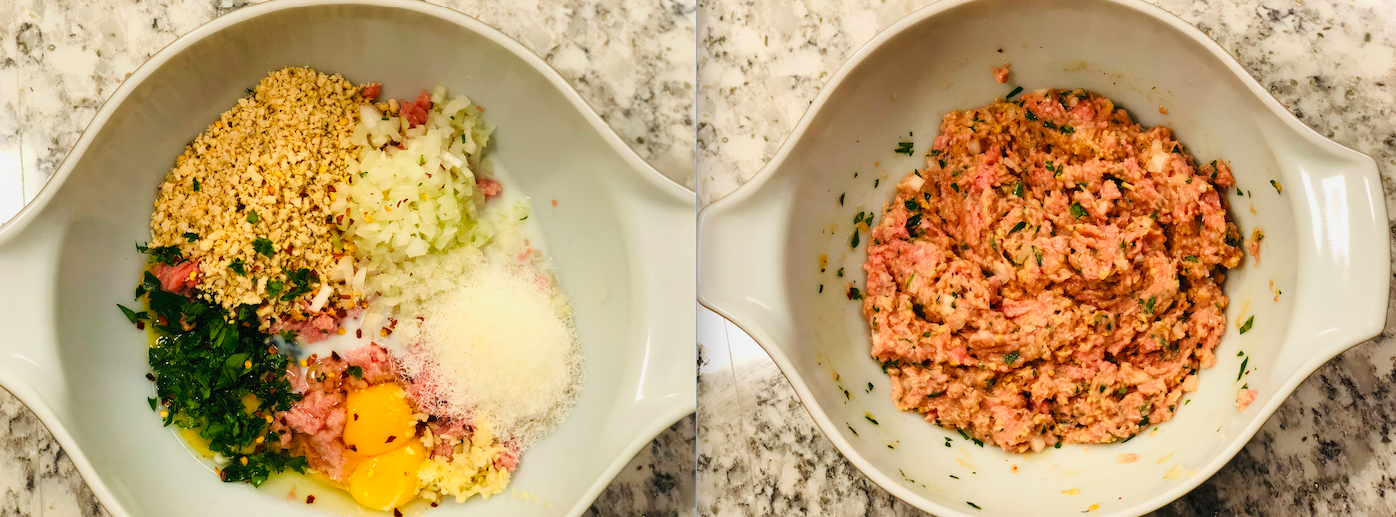
- When thoroughly mixed, make the meatballs – about 1 ½ inches each – and place them on a sheet pan or plates. (When shaping the meatballs, it can help to wet your hands with cold water intermittently.) Let the meatballs rest in the fridge for half an hour.
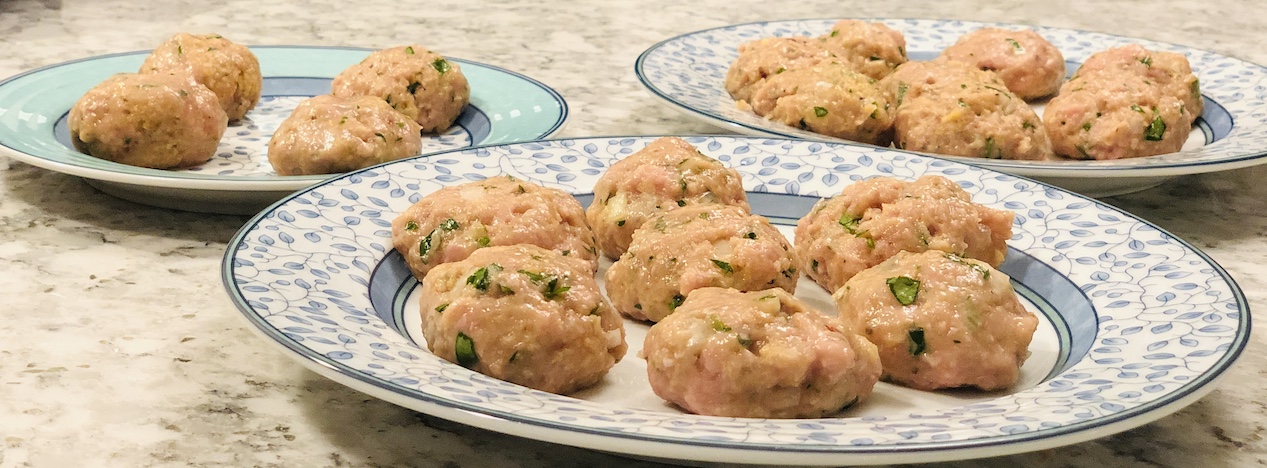
- Heat 2 tablespoons of olive oil in a large pot or deep pan over medium heat. Add the second clove of garlic and 1/8 teaspoon red pepper flakes. Let the garlic and red pepper flakes sizzle for about 1 minute until the garlic is golden. Be careful that it doesn’t burn.
- Add the tomato puree to the pot and then add the second teaspoon of salt. Let the tomatoes simmer for about 10 minutes, making sure to stir them a few times.
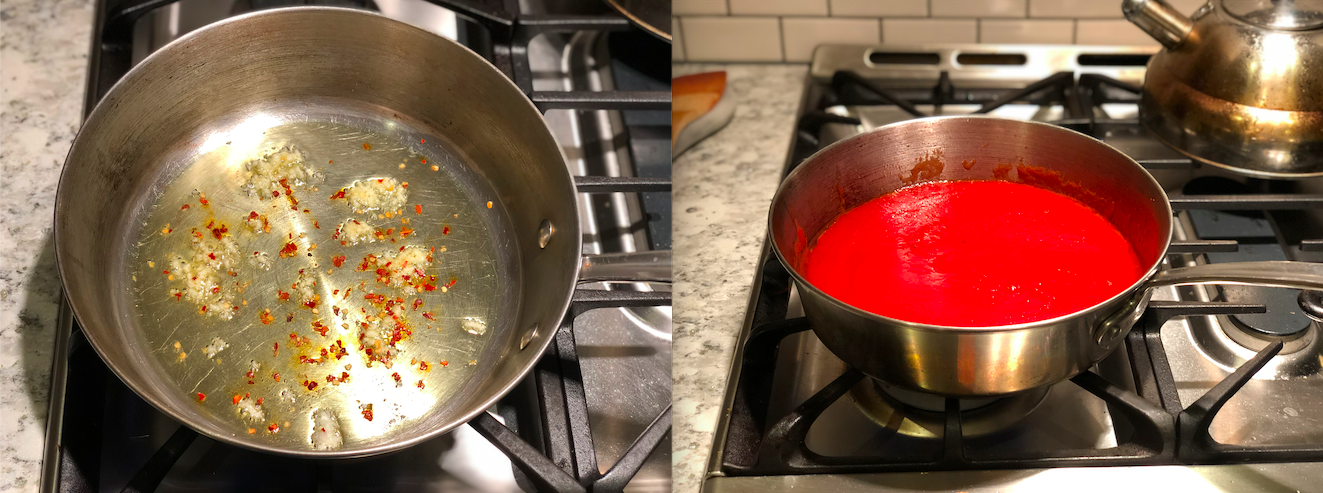
- When the meatballs have been in the fridge for half an hour, they are ready to go into the pot. Turn the tomato sauce to a low simmer. (Sometimes I have to turn it off completely to avoid splattering.) Place each meatball carefully into the tomato sauce in a single layer. Cover the pot with a lid and let the meatballs cook for at least 20 minutes without lifting the lid.
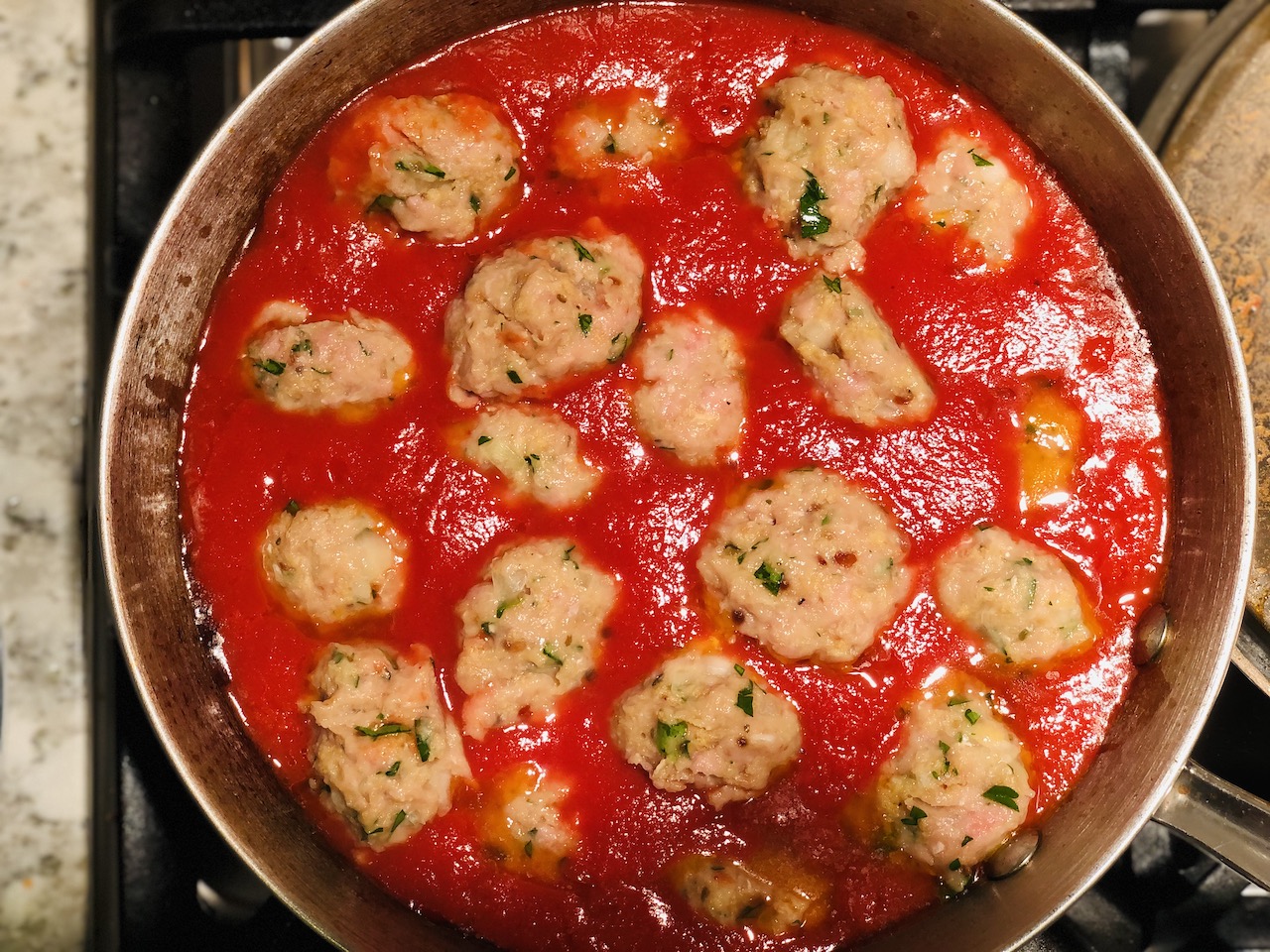
- After 25 minutes, the meatballs should be done. (This can vary a little depending on the pot you are using, so you probably want to check that they are cooked through.) Serve with pasta, garlic bread, or both!
